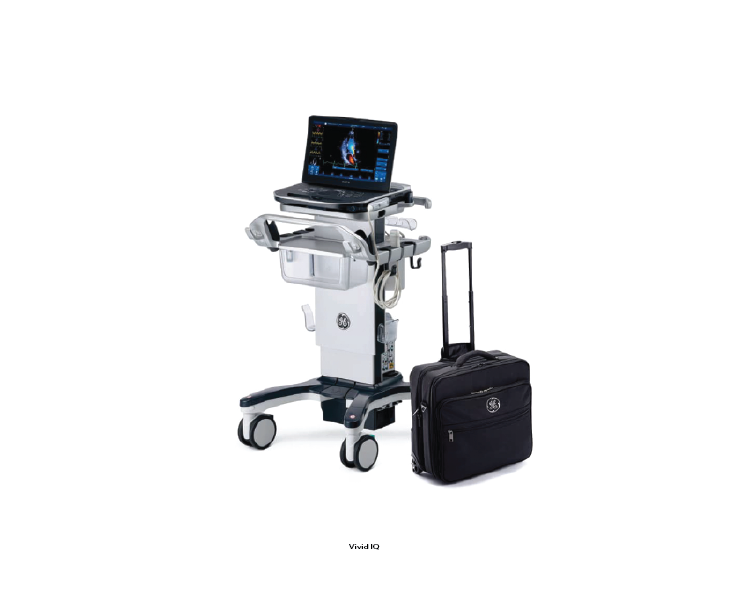Versana Premier
The Versana Premier Ultrasound, developed by GE Healthcare, is a high-performance imaging system designed to meet the needs of a variety of clinical settings. This ultrasound system offers advanced imaging capabilities, intuitive user interface, and ergonomic design, making it an excellent choice for healthcare providers seeking reliable and versatile diagnostic tools. With a focus on delivering high-quality images and enhancing workflow efficiency, the Versana Premier is suited for a wide range of applications from general imaging to specialized medical fields.
Key Features of Versana Premier
1. Advanced Imaging Technology
• High-Resolution Imaging: Provides sharp, detailed images with high resolution and excellent contrast, crucial for accurate diagnoses.
• Wide Range of Transducers: Includes various transducers tailored for different clinical applications, ensuring versatility in imaging needs.
• Auto-Optimization Tools: Features tools such as Auto Image Optimization and Auto Doppler to automatically enhance image quality and streamline the imaging process.
2. User-Friendly Design
• Intuitive Interface: The touchscreen interface is designed for ease of use, allowing quick and efficient operation even for less experienced users.
• Customizable Settings: Users can personalize presets and protocols to suit their specific workflow and clinical preferences.
• Ergonomic Features: Adjustable monitor and control panel to improve user comfort, reducing strain during extended use.
3. Ergonomic and Portable
• Compact and Mobile: With a small footprint and wheels, the system is easily movable within clinical environments, facilitating bedside and point-of-care imaging.
• Battery-Powered Option: Provides flexibility in various clinical settings, especially where access to power outlets may be limited.
4. Data Management and Connectivity
• Integrated Software: Efficiently manages data with integrated software for image storage, retrieval, and reporting.
• Connectivity Options: Supports DICOM and other connectivity protocols, ensuring seamless integration with hospital information systems (HIS) and picture archiving and communication systems (PACS).
Clinical Applications
1. General Imaging:• Provides high-quality imaging for abdominal, pelvic, and small parts examinations, facilitating comprehensive evaluations.
2. Cardiology:
• Advanced Doppler and cardiac imaging capabilities support detailed cardiovascular assessments and diagnostics.
3. Obstetrics and Gynecology:
• Delivers clear fetal and maternal imaging, aiding in prenatal care and monitoring.
4. Musculoskeletal:
• High-resolution imaging of muscles, tendons, and joints assists in diagnosing injuries and conditions related to the musculoskeletal system.
5. Vascular Imaging:
• Detailed vascular imaging with color, power, and spectral Doppler modes for evaluating blood flow and identifying vascular abnormalities.
Vivid IQ
The Vivid IQ is an advanced, portable ultrasound system developed by GE Healthcare, renowned for its exceptional imaging capabilities in a compact, lightweight design. It caters to the needs of various clinical settings, providing high-quality diagnostic imaging while maintaining ease of use and portability. The Vivid IQ is engineered to support a wide range of applications, from cardiology to general imaging, making it an indispensable tool for healthcare professionals seeking versatility and performance in ultrasound technology.
Key Features of Vivid IQ Ultrasound System
1. Portability: Weighing approximately 4.5 kg (10 lbs), the Vivid IQ is designed for easy transport, allowing clinicians to move it seamlessly between departments or take it to remote locations where advanced imaging is required.
2. High-Quality Imaging:
• High Definition Speckle Reduction Imaging (HDSRI): Enhances image clarity by reducing speckle noise.
• Tissue Velocity Imaging (TVI): Provides detailed assessment of myocardial motion.
• AutoEF: Automatically calculates ejection fraction, streamlining cardiac assessments.
• Contrast Imaging: Enhances visualization of blood flow and tissue perfusion.
3. User-Friendly Interface:
• Touch Screen: The intuitive touch screen interface allows for easy navigation and operation.
• Customizable Controls: Users can personalize the interface to match their specific workflow needs, improving efficiency.
• Versatile Transducer Options: Supports a variety of transducers, enabling its use for different types of examinations, including linear, convex, and sector probes, to cover a broad range of clinical scenarios.
4. Connectivity:
• DICOM Integration: Ensures seamless integration with electronic medical records (EMR) and Picture Archiving and Communication Systems (PACS).
• Wireless Connectivity: Facilitates easy data sharing and remote consultations, enhancing collaboration among healthcare teams.
• Long Battery Life: The robust battery allows for extended use, crucial for point-of-care applications where immediate and reliable imaging is needed without frequent recharging.
Application of Vivid IQ Ultrasound System
1. Cardiology:• Echocardiography: Evaluates heart structure and function, aiding in the diagnosis and management of cardiovascular diseases.
• Stress Echo: Assesses cardiac performance under stress conditions.
2. Vascular Imaging:
• Carotid Arteries: Detects stenosis or occlusions in the carotid arteries.
• Peripheral Vessels: Evaluates blood flow in peripheral arteries and veins, crucial for diagnosing vascular conditions.
3. General Imaging:
• Abdominal: Assesses organs such as the liver, kidneys, pancreas, and gallbladder.
• Obstetric and Gynecological: Monitors fetal development and evaluates gynecological conditions.
4. Musculoskeletal:
• Soft Tissue: Examines muscles, tendons, ligaments, and joints for injuries or abnormalities.
• Guided Injections: Assists in the accurate placement of therapeutic injections.
5. Small Parts:
• Thyroid: Evaluates thyroid gland morphology and detects nodules.
• Breast: Helps in the assessment of breast lumps and lesions.
6. Emergency Medicine:
• FAST (Focused Assessment with Sonography for Trauma): Rapidly evaluates patients with trauma for internal bleeding.
• Point-of-Care Ultrasound (POCUS): Provides immediate diagnostic information to support clinical decision-making in emergency settings.


